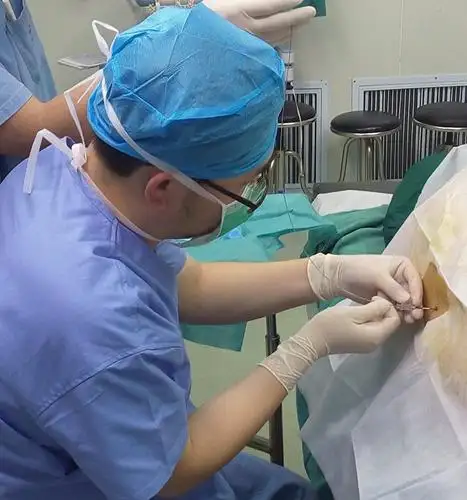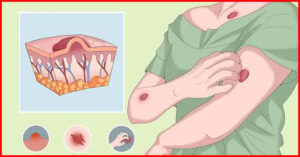What to do about cancer pain? Some oncologists get it wrong
Pain is a common problem encountered by many cancer patients, but many patients, family members, and even medical staff have misunderstandings about cancer pain and how to deal with it.
Today, we follow the professional pain doctors from the Cancer Hospital to get out of the misunderstandings and understand how to correctly deal with cancer pain.
Myth 1: Pain is caused by tumors. If the tumor is cured, the pain will go away.
This may be the most common misconception. For some tumors, such as pancreatic cancer and gastric cancer, pain is often an early signal sent by the tumor to stimulate the human body. When the tumor is removed or cured by radiotherapy and chemotherapy, the pain will naturally disappear. However, for many patients with advanced tumors, this is not the case.
1. Patients with advanced tumors such as bone metastasis and retroperitoneal metastasis: It may be neuropathic pain
The pain in these patients is caused by nerve damage rather than simple aseptic inflammation, which is called neuropathic pain. Even if the tumor is “cured”, the damage to the nerves cannot be restored, and this neuropathic pain will persist and even accompany them for life.
In China, most cancer patients are diagnosed in the middle or late stages of the disease, with a five-year survival rate of only about 30%, and the treatment effect is not ideal. In other words, most primary diseases may not be curable. Simply relying on tumor treatment while ignoring pain treatment will result in the tumor not being cured and the patient suffering.
2. About 10% of patients have pain caused by non-tumor factors
For cancer patients, about 75% of pain is caused by the tumor, and about 15% of pain is caused by tumor treatment (such as intercostal neuralgia after thoracic surgery, low back pain after lumbar surgery, peripheral neuritis after chemotherapy, neuralgia after radiotherapy, etc.). There are also about 10% of patients whose pain is not caused by tumors, but like normal people, it is caused by non-tumor reasons such as cervical spondylosis and intervertebral disc herniation.
In other words, the pain experienced by cancer patients is not necessarily cancer pain.
Myth 2: Just bear with the pain, and take painkillers when you can’t bear it anymore, to avoid getting addicted
It can be said that many people hold this view. They try their best to endure and use less medication.
For cancer patients, especially those with chronic persistent pain, the pain is often unbearable and cannot be understood by those who have not experienced or experienced that kind of pain. Patients need to continue to use painkillers to stabilize the drug concentration in the blood in order to achieve the purpose of controlling pain, alleviating pain and improving the quality of life.
If you take less medicine this time, you may need more medicine next time to relieve pain, which will bring more side effects. The final result is that you still take less medicine and suffer the same pain. “Administering medicine on time and providing adequate analgesia” is one of the concepts that the World Health Organization (WHO) has been promoting.
Some cancer pain patients need to use opioids (such as morphine, oxycodone, fentanyl, etc.), and these drugs are addictive. In fact, opioids used in cancer pain treatment are not highly addictive. Statistics show that less than one in a thousand cancer pain patients has this addiction.
As the tumor progresses, the patient’s pain worsens and the dose of painkillers needs to be increased. At the same time, opioids are tolerant, so it is normal for many patients to take more and more medication, which is clearly different from “addiction.”

Myth 3: I am allergic to painkillers and cannot take them
I often hear patients say: “When I take tramadol/morphine/oxycodone, I feel dizzy, nauseous and vomit. The doctor said I am allergic to it.” In fact, this is not an allergy, but a common adverse reaction of opioids (nausea, vomiting, dizziness, constipation, dysuria, etc.).
Due to individual differences, people have different sensitivities to drugs, and adverse reactions vary from person to person. In this case, it is not that the drug cannot be used, but appropriate pretreatment is required:
Give antiemetics and laxatives preventively, and then slowly reduce the dosage once the patient has adapted; start with a small dose and increase it gradually.
If the pain is controlled after increasing the dose to a certain level, but the adverse reactions are still obvious, you can change the analgesic drug. For example, replace MSContin/OxyContin with a fentanyl transdermal patch. You can also change the treatment method, such as nerve destruction or intrathecal drug infusion, to enhance the analgesic effect and reduce adverse reactions.

Myth 4: I have tried so many drugs but they are not effective. Is there nothing I can do but die in pain?
Tumor treatments include surgery, radiotherapy, chemotherapy, immunotherapy, etc. In addition to the traditional three-step drug treatment. There are many other ways to treat cancer pain. Such as patient-controlled analgesia, nerve block, nerve damage, continuous subarachnoid drug infusion analgesia, etc. These pain relief techniques are less invasive and have good therapeutic effects.
Myth 5: Minimally invasive analgesia is risky and can cause paraplegia, so it should only be used as a last resort.
Minimally invasive analgesia actually causes very little trauma and can be tolerate by most advanced patients. But each has its own indications and application conditions.
For example, celiac plexus block is suitable for patients with cancer-related abdominal pain (such as pancreatic cancer, bile duct cancer, retroperitoneal lymph node metastasis, etc.). After the operation, even the needle hole cannot be seen. The sympathetic nerves are destroyed during the treatment, not the spinal nerves that control the activity. The incidence of complications such as paraplegia is extremely low (less than one in ten thousand). There is transient hypotension and diarrhea after the operation, which can be treated symptomatically. The effective rate of treatment can reach about 80%, and the analgesic effect is good.
If minimally invasive treatment is expected to be effective, it can be used as early as possible. What is the highest level of pain relief treatment? That is to be able to relieve pain for a long time without using any drugs. If minimally invasive treatment can achieve this goal, why not use it early?

Myth 6: Radiotherapy/chemotherapy can also relieve pain, and the pain will go away once it takes effect
This is the view of some internists or radiation oncologists. Radiotherapy, chemotherapy, interventional therapy, etc. can have analgesic effects. If the indications are well chosen, but they are not 100% effective.
The average control rate of chemotherapy for advanced tumors does not exceed 50%. For example, chemotherapy has a maximum efficacy of about 60% to 70% for lung cancer, and only
30% to 40% for gastric cancer. When it comes to third-line drug treatment, the efficacy is even less than 10%. Radiotherapy has a good analgesic effect on pain caused by bone metastasis, and its maximum efficacy is about 70%. Even if radiotherapy is effective, it takes about half a month from the formulation of the plan to the start of the treatment to the effectiveness of the treatment.
Multidisciplinary analgesia and full-course analgesia are the most advocated analgesia methods at home and abroad. Only through the combination of multiple methods and early intervention can the best effect be achieved.
For example, ginsenosides combined with radiotherapy, chemotherapy, and targeted therapy have been proven to be a combination therapy. That can reduce side effects, relieve pain, and enhance anti-cancer effects. More and more patients have benefited from this treatment and achieved good results.



Pingback: My eyes are dry. Is this dry eye syndrome? Protect your eyes
Pingback: Can Helicobacter pylori infection cause cancer? -
Pingback: How long can you live with cancer "bone metastasis"?
Pingback: When I press my back, my thoracic joints hurt. Is it inflammation?
Pingback: Warning signal for liver cancer
Pingback: A Quick Guide to Sucralose
Pingback: Be alert to these symptoms, otherwise stomach cancer will develop to the late stage!
Pingback: Erika Carr Ogden Utah Cancer Journey: Faith, Strength & Support